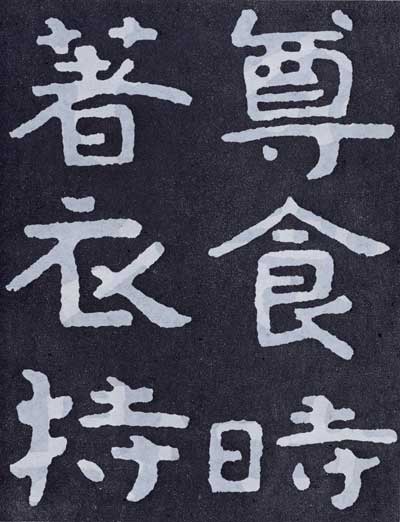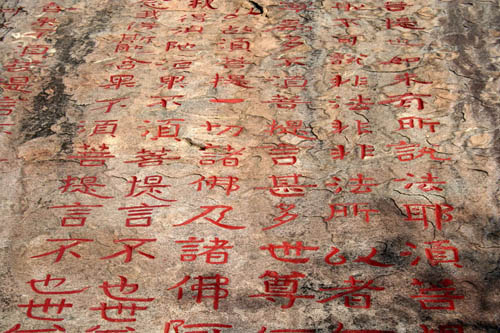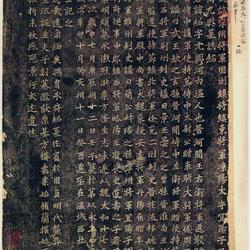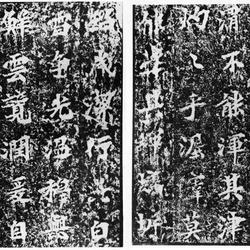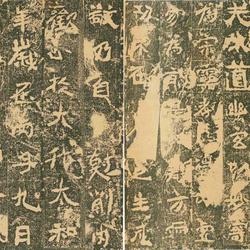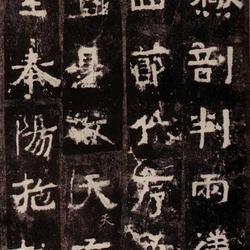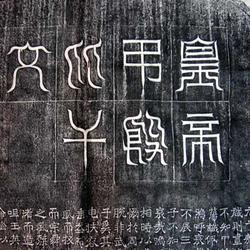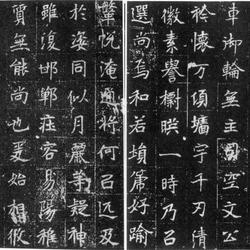"Taishan Jingshi Valley", also known as "Taishan Buddha Speaks the Diamond Sutra", is carved on a cliff, carved between Tianbao in the Northern Qi Dynasty, and carved on the stream bed of a valley one kilometer east of Doumu Palace in Mount Tai, Shandong. The character diameter is 50 centimeters, and the font is between official and regular script. According to original rubbings in the early Republic of China, there are more than 960 characters. It is an unprecedented scale among the existing cliff carvings. The whole text is majestic, with a graceful and leisurely manner, as if it were an immortal; its writing style is mellow and pleasant, blending seal script and official script into regular script, and the structure is broad and strong, with a sense of simplicity and broadness. Yang Shoujing of the Qing Dynasty said: "The Northern Qi Dynasty's "Taishan Jingshiyu" is written in a large book with a diameter ruler, like a small regular script, and there is no sign of tension. This is the ultimate rule when writing a large book." Use the pen calmly and calmly, The wind god is calm, graceful and generous. The structure is unique and reclining, full of personality. He is respected as the "originator of Chinese characters" and "the ancestor of list books". The Taishan Jing Shiyu Diamond Sutra does not have the name of the author. Because the writing style is similar to the "Inscription of Jinchang King Tang Yong" on Jianshan Moya, Zouxian County, Shandong Province, later generations may believe that it was written by Tang Yong. It is also similar to the "Kulai Mountain Mahaprajna Sutra". The "Culaishan Mahaprajna Sutra" contains the words "Made by Prince Chun in the first year of Qi Wuping", so later generations speculated that it was written by Prince Chun. Ruan Yuan's "Shanzuo Jinshi Zhi" of the Qing Dynasty was written by people from Tianbaojian (550--559 AD) in the Northern Qi Dynasty. "The Taishan Jing Shiyu Diamond Sutra" contains many unusual common characters, among which the two characters "wan" and "wu" are actually the same as the commonly used simplified characters. This letter is of considerable value for studying the historical evolution of Chinese calligraphy and the achievements of calligraphy art.
